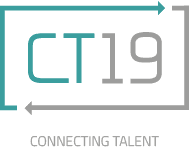
Employees seek out assistance from Human Resources for all sorts of reasons. From understanding your benefits to sorting home office equipment, or even the simplest of queries such as ‘who do I go to about my payslip?’ – questions for Human Resources are exactly that, human, and should be handled as such. When employees seek guidance, reassurance, and knowledge from their HR teams, and they are met with call center hold music or have to dig through a labyrinth of details to find the right contact – something is not right.
It is no secret that we are in a very tight talent market at present, which means the question that should be on every CEO and senior leader’s mind is “How do we establish, maintain, and build our company’s talent brand?” And, “how can we attract and keep the best applicants?”. For those of us in HR, we must figure out how we can support or solve this issue, and what exactly HR’s role is in the talent war we find ourselves in.
Through a series of four studies that involved more than 32,000 participants, the ADP Research Institute (ADPRI) and I have attempted to answer this crucial question. For the first time, we have quantified the power of the HR function, with a new metric that pinpoints specific factors that influence talent brand, people’s intent to leave, and reasons to actually leave, all in a study across 25 countries. The metric also measures the psychological experiences shaped by excellent HR service quality and the data that uncovers exactly what leads to these positive experiences. This metric is called HRXPS – the HR XPerience score.
What the research uncovered
Our research allowed us to analyze HR through three different lenses. Firstly, to determine if an employee thinks HR adds value to their experience (called Value-Promoting). Second, if HR is performing its responsibilities effectively (Performing), and third, if employees view the HR function as detracting from the value of their employee experience (Value-Detracting). Using these three facets we identified some key findings, including but not limited to:
- Clear communication is key – A single point of contact influences HR XPerience Score, and employees are twice as likely to say HR is Value-Promoting when they experience a single point of contact within HR, as opposed to multiple contacts.
- Don’t be a stranger – Employees are 7.4 times more likely to say HR is Value-Promoting when they experience seven interactions with HR. The higher the level of interaction, the higher the Value-Promoting score.
- Deliver on your services – The more HR services an employee uses, the higher the HRXPS. We found the top three services that influenced HRXPS were a formal onboarding process, attention on their performance, and access and ability to use health benefits.
How to increase HRXPS at your organization
Unsurprisingly, our data shows that there is a strong relationship between a high HRXPS and lower intent to leave and lower active job searches; in effect, lower turnover and a stronger talent brand for your company. So, what can organizations, and the HR function, in particular, do to increase HRXPS?
It can be tempting to move away from individual, more personalized contact in a bid to increase efficiency, but our research proves that this has the opposite effect. In the complicated and emotionally fraught situations that HR is often responding to, employees always want to have someone as their guide. They may have to hand them off to an expert for their specific need, but someone who knows their name and situation will be hugely comforting.
Every interaction with HR is an opportunity to form a positive experience, and although the broad current trend is to reduce interactions, the more HR services an employee uses and the more frequently the employee calls on the HR function to help with a work-related issue, the higher their HRXPS is going to be. To further validate this, we investigated whether a specific HR interaction would drive higher HRXPS. Does reaching out to solve a conflict matter more than, say, requesting information about health or other benefits? We found when it comes to these tasks and services, more is better, regardless of the topic.
Above all else though, formal onboarding and frequent performance attention have the highest impact on HRXPS. In the competitive talent market we find ourselves in, being attentive is imperative. Employees must be having frequent conversations about their performance, whether it’s with someone from HR, a manager, or a team member.
Our research shows that the HR function has a serious role to play in an organization’s overall talent brand and the employee experience. Instead of replacing HR and removing the human factor, technology should be used as a tool for HR to add value and emotion to their roles. Now you know what to do and how to measure that impact, it’s time to show just how valuable HR is in the current workplace climate.
Marcus Buckingham (@mwbuckingham) is a New York Times bestselling author, a global researcher, and head of ADP Research Institute—People + Performance.




